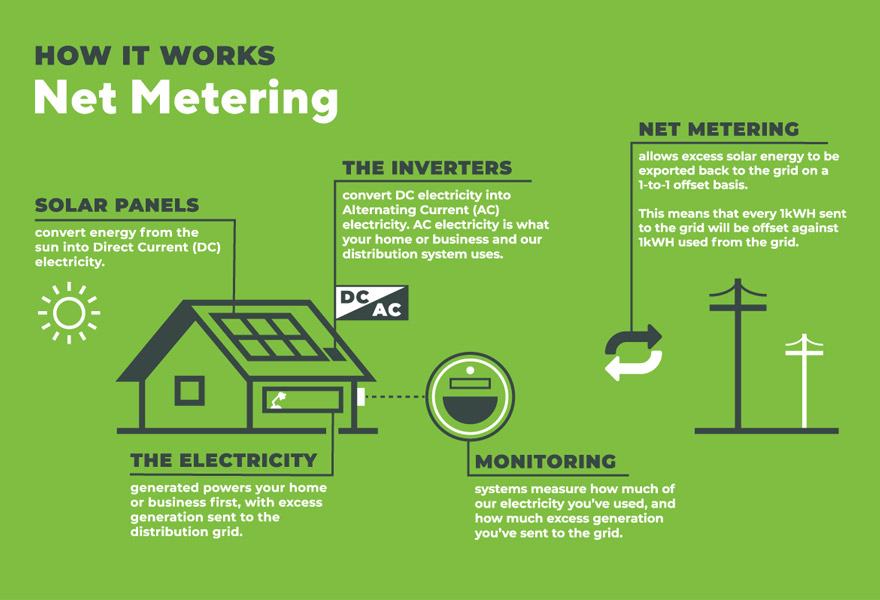
Is Net Metering Worth It?
Net Metering allows self-producers to install photovoltaic systems to meet their energy needs through energy offsetting, as outlined by Ministerial Decision ΑΠΕΗΛ/Α/Φ1/οικ. 24461, published in Government Gazette Β΄ 3583/31-12-2014 ("Installation of Renewable Energy Units by Self-Producers with Energy Offsetting").
This Net Metering system was introduced in Greece with goals such as energy security, efficiency, energy savings, environmental awareness, and financial benefits for self-producers (either residential or commercial).
What applies to Net Metering in Greece
On May 8, 2015, the submission process for Net Metering applications to DEDDIE (Public Power Corporation - PPC) began for low voltage consumers.
How Net Metering Works
- The photovoltaic system converts solar energy into electricity, providing direct current (DC).
- The inverter converts DC to alternating current (AC, 230V-50Hz), while a meter records the produced energy.
- The produced energy is used to power the residence.
- Excess energy is recorded by the bidirectional meter and is injected into the PPC grid (injected energy).
- When the produced energy is insufficient for your consumption needs, energy is absorbed from the PPC grid and recorded by the bidirectional meter (absorbed energy).
Self-Production
In the self-production (Net Metering) system, the bill is offset based on energy consumption. Every time a billing cycle is completed (every four months for residential installations), the energy inflow-outflow is balanced. If the self-producer consumes more energy than they produce, they will pay the difference. If there is an energy surplus, it is carried over to the next four-month cycle. Final balancing is done annually, and any surplus is not carried over to the following year.
It's important to choose the correct system size to avoid producing more energy than is consumed. With Net Metering, the energy produced by a self-producer's PV system is not sold to PPC, but the energy offset serves as a tool for saving energy and significant amounts of money that would otherwise be spent on electricity bills.
Net Metering is beneficial for any household or business that consumes more than 3,000 kWh annually. The higher the consumption, the greater the benefit, as Net Metering encourages small consumers to cover a large part of their fixed energy needs with electricity.
- A typical case of significantly reducing energy costs for heating and cooling is replacing a boiler-burner system with a heat pump.
- Additionally, by optionally adding a charger, batteries, and an inverter to the PV system, the self-producer can achieve energy autonomy during grid outages (blackouts).
How Much PV Power Can We Install?
The maximum allowable PV power in the interconnected mainland and island grid is 20 kW. It can be exceeded by up to 50% of the agreed consumption capacity. Power limits for non-interconnected islands are 10 kW, while for Crete, they are 20 kW, with the possibility of exceeding up to 50 kW.
In existing single-phase low-voltage connections, the PV system's power cannot exceed 5 kW. For a larger PV system, a prior upgrade of the connection to a three-phase system is required.
Payback Time and Indicative Prices
Based on solar radiation measurement tables in Greece, a 1 kWp installed PV panel can produce 1,150 to 1,500 kWh per year. Therefore, a criterion for selecting the power of the PV generator is the ratio of the energy consumed annually (from PPC bills) to the energy a 1 kWp system can produce at the location, considering the appropriate orientation and tilt.


